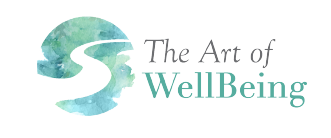WellBeing as Art?
Most leaders know the experience of trying very hard—perhaps too hard—to make something happen. We can muscle our way through a challenging time only to discover that the harder we push, the more resistance we feel. If we want to cultivate resilience, positive energy, and creativity, we are called to balance effort and surrender. We are invited to practice WellBeing as we would practice art.
I believe holistic WellBeing is an essential art form for anyone who seeks to lead and serve others well. As WellBeing artists, we intentionally cultivate curiosity and vulnerability by first imagining the big picture. The big picture is your vision of what it means for you to live fully while giving back to the world, which involves paying consistent attention to all dimensions of life— spiritual, emotional, mental, physical, financial, vocational, and social. When intentional about creating this vision, we gain self-awareness and clarity for action. Disciplined practices are essential. But there is more to WellBeing than action planning, striving, or disciplined effort. We are actually co-creators with something or someone bigger than ourselves and often beyond description. And that co-creation requires balancing effort with surrender.
I watch my two-year-old granddaughter try to force a triangle into the square opening of an old-fashioned shape-sorter. Harder and harder she pushes. In frustration, she throws down the triangle. Later, with encouragement, she tried again, this time with a circle. At first she pushes hard in the wrong place. Then she gives a big sigh… relaxes just a bit… and, seemingly by chance, moves her little hand toward the circle opening. When the shape slips through, she looks up at me with delighted surprise. How did that happen, Grana?
As with other forms of artistic practice, the practice of WellBeing depends on skills, discipline, and something more. We might think of the “something more” as an X factor or an IT factor. The X or IT factor in what makes something or someone special is usually beyond logical analysis or description. I remember my little Irish grandmother telling me, “When I was young, I don’t know if I was pretty. But when I was young, I knew that I had IT.” She had IT all her life and our family knew it.
I propose that the X—IT—factor has more to do with surrender or letting go than with striving or trying harder. We do need disciplined practice, but we often lack the ability to let go, having done our best. A gifted visual artist recently described to me the messes that happen when they keep painting and painting and painting— filling every space, over-functioning with effort and action.
Surrendering brings fresh insights when we are looking for a missing connection. Consultant Susan Beaumont invites leaders to make three spiritual shifts in seasons of ongoing change: “from knowing to unknowing, from advocating to attending, and from striving to yielding (surrendering).” She acknowledges that this is difficult for most leaders because we are expected to have answers and be problem solvers. This artful balancing of effort and surrender creates a kind of vulnerability for all those who are called to lead and serve others. To practice WellBeing as art creates a necessary, and ultimately powerful, vulnerability for leaders.
In The Art of WellBeing online course, future blogs, and single-session group coaching opportunities, we will continue to explore the power and possibility of balancing effort and surrender. I invite you to let go of the vicious cycle of over-effort and over-thinking. In the group cohorts, you can step back from day-to-day rhythms to gain perspective while experiencing a wealth of idea-sharing with others from similar life and work settings. Consider joining the next cohort or single-session group coaching to receive inspiration, encouragement, and safe accountability for moving forward in optimizing your holistic WellBeing.
